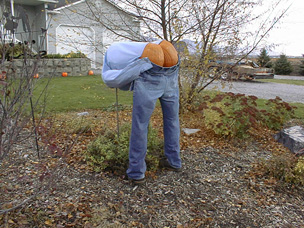
Mooning Your Garden

OK, now that we have that out of the way...
You are probably familiar with the phrase, "planting by the moon." And, you may be wondering if there is any validity to timing the seeding of your garden based on the phases of our lunar friend. Followers of biodynamic gardening, an agricultural practice that is as old as farming, certainly believe in it. Simply put, biodynamic gardening works with the rhythms of nature, creating a self-supporting farm ecosystem through the use of composting, crop rotation, companion planting and raised beds.
The phases of the moon guide biodynamic gardeners in determining the best times to plant and cultivate: from the new moon to the first quarter, plant above ground crops such as lettuce and celery, as well as any crop that produces its seed outside the fruit (corn, for example). From the first quarter to the full moon, plant crops that contain the seed within the fruit or pod, such as flowers, beans, tomatoes and peppers. From the full moon to the last quarter, plant bulb and root crops such as carrots, garlic, onions and radishes. During the last quarter of the new moon, undertake weeding, cultivating and organic methods of pest control.
What is the influence of the moon on crops? There is no definitive answer. It could be the gravitational pull or some other little understood idea. According to the subject's adherents at the website, gardeningbythemoon.com, "Just as the moon pulls the tides in the oceans, it also pulls upon the subtle bodies of water, causing moisture to rise in the earth, which encourages germination and growth."
Certainly a dinner topic for garden skeptics, planting by the phases of the moon may be worth a try, just to see for yourself if there really is a difference.